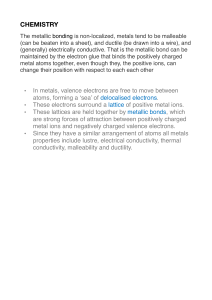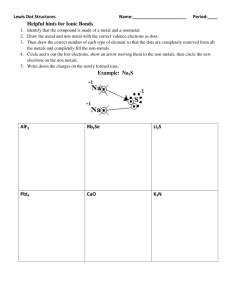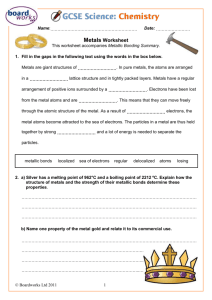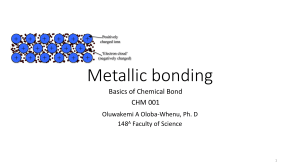File - SCSC Year 10 Science
advertisement
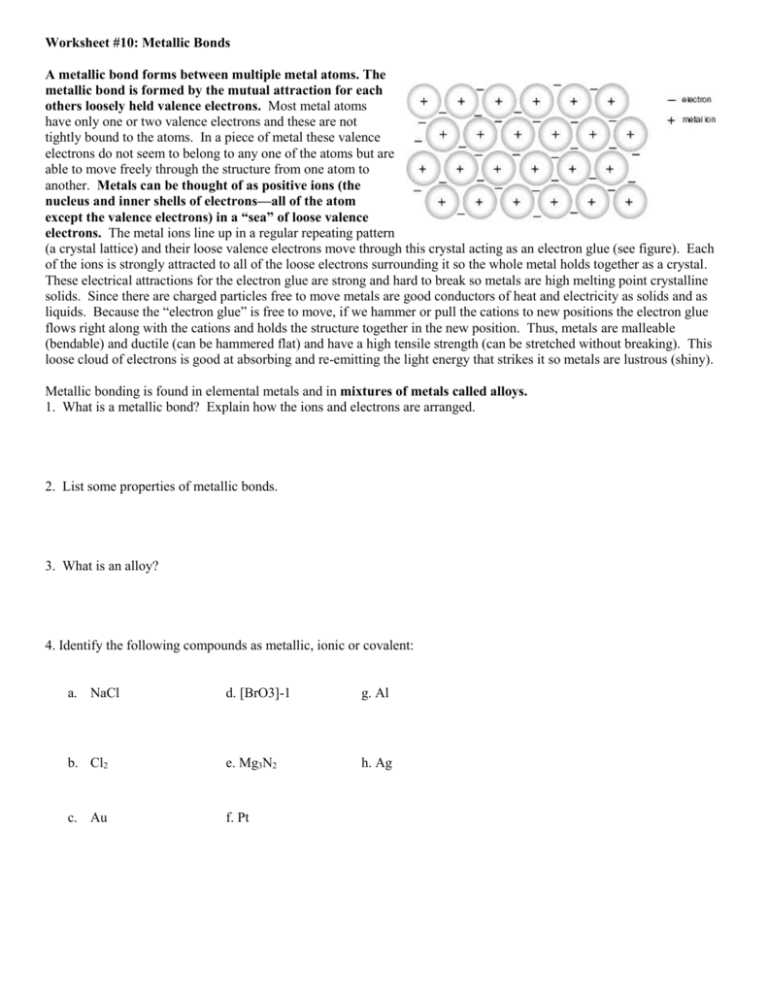
Worksheet #10: Metallic Bonds A metallic bond forms between multiple metal atoms. The metallic bond is formed by the mutual attraction for each others loosely held valence electrons. Most metal atoms have only one or two valence electrons and these are not tightly bound to the atoms. In a piece of metal these valence electrons do not seem to belong to any one of the atoms but are able to move freely through the structure from one atom to another. Metals can be thought of as positive ions (the nucleus and inner shells of electrons—all of the atom except the valence electrons) in a “sea” of loose valence electrons. The metal ions line up in a regular repeating pattern (a crystal lattice) and their loose valence electrons move through this crystal acting as an electron glue (see figure). Each of the ions is strongly attracted to all of the loose electrons surrounding it so the whole metal holds together as a crystal. These electrical attractions for the electron glue are strong and hard to break so metals are high melting point crystalline solids. Since there are charged particles free to move metals are good conductors of heat and electricity as solids and as liquids. Because the “electron glue” is free to move, if we hammer or pull the cations to new positions the electron glue flows right along with the cations and holds the structure together in the new position. Thus, metals are malleable (bendable) and ductile (can be hammered flat) and have a high tensile strength (can be stretched without breaking). This loose cloud of electrons is good at absorbing and re-emitting the light energy that strikes it so metals are lustrous (shiny). Metallic bonding is found in elemental metals and in mixtures of metals called alloys. 1. What is a metallic bond? Explain how the ions and electrons are arranged. 2. List some properties of metallic bonds. 3. What is an alloy? 4. Identify the following compounds as metallic, ionic or covalent: a. NaCl d. [BrO3]-1 g. Al b. Cl2 e. Mg3N2 h. Ag c. Au f. Pt
